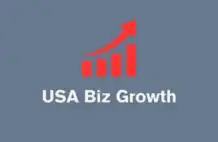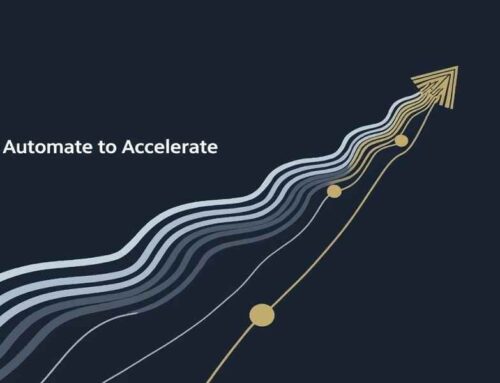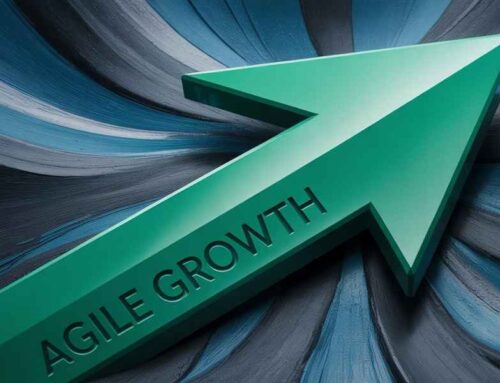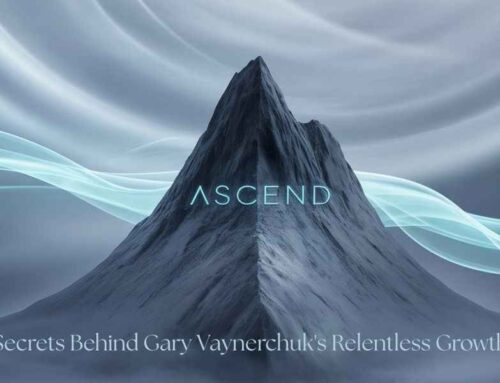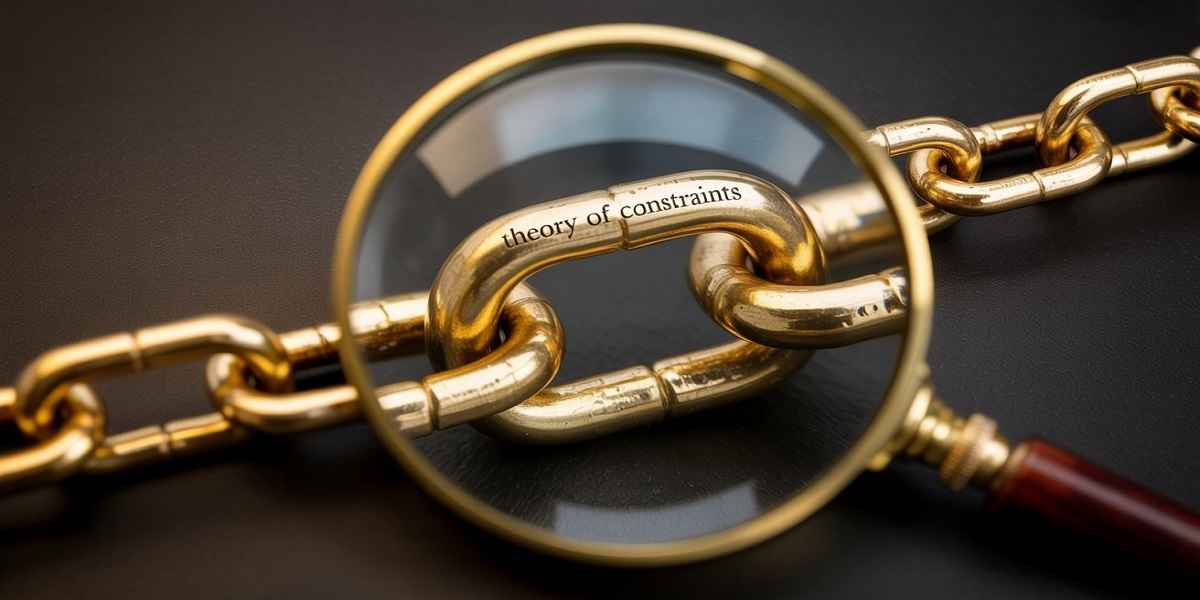
What exactly is the Theory of Constraints?
Have you ever wondered why some businesses seem to soar while others struggle, even with seemingly identical resources and markets? What if there was a secret weapon, a powerful methodology that could pinpoint the bottlenecks holding your organization back and propel it forward?
That secret weapon is the Theory of Constraints (TOC). This revolutionary approach, championed by Dr. Eli Goldratt, offers a counter-intuitive yet highly effective path to sustained business growth.
You’re a business leader, an entrepreneur, a manager – someone constantly striving for more efficiency, higher profits and a competitive edge. You’ve likely tried numerous strategies: process improvements, lean methodologies, Six Sigma. And while these can offer incremental gains, they often miss the core issue.
They might optimize individual parts, but do they optimize the entire system? The Theory of Constraints challenges you to look at your business not as a collection of isolated departments, but as an interconnected system.
Think about it. Every system, whether it’s a manufacturing plant, a service operation, a sales funnel or even your daily routine, has a single limiting factor. One constraint. This constraint dictates the maximum output of the entire system. Ignoring it is like trying to accelerate a car with a flat tire – no matter how powerful the engine, the flat tire will always limit your speed.
The Theory of Constraints provides a systematic framework to identify, exploit, subordinate, elevate and then restart the process, continuously improving your organization. It’s a continuous journey toward unprecedented business growth.
The Genesis of a Game-Changer: Understanding the Core Principle
Where did this powerful idea come from? Dr. Eli Goldratt, a physicist, introduced the Theory of Constraints in his groundbreaking 1984 novel, The Goal. This isn’t a dry academic text; it’s a gripping business novel that illustrates TOC’s principles through the struggles of a manufacturing plant manager.
The book’s impact was immense, demonstrating that focusing efforts on the single biggest bottleneck yields far greater results than widespread, unfocused improvements.
The core principle is deceptively simple: in any series of linked processes, the rate of output is determined by the slowest step. This slowest step is your constraint. It’s the weakest link in your chain. All other steps, no matter how efficient they appear, are simply waiting on the constraint or building up inventory before it.
Doesn’t that make intuitive sense? Yet, how often do we see companies pouring resources into optimizing non-constrained areas, leading to little or no overall improvement?
Consider a restaurant kitchen. If the chef is the bottleneck, no matter how fast the waiters take orders or how quickly the dishwashers clean, the number of meals served will always be limited by the chef’s speed. Investing in faster dishwashers won’t increase overall meal output if the chef is still the constraint.
This is the fundamental insight that TOC brings to the table. It forces you to ask: What truly limits our output? What prevents us from achieving more significant business growth?
The Five Focusing Steps: Your Roadmap to Unlocking Potential
The Theory of Constraints isn’t just a philosophy; it’s a practical methodology. Goldratt outlined the “Five Focusing Steps,” a cyclical process for continuous improvement. These steps provide a clear roadmap for identifying and overcoming constraints, leading to sustained operational excellence and, ultimately, significant business growth.
- Identify the Constraint: This is the most crucial step. You can’t fix what you don’t know is broken. The constraint is the part of your system that limits its overall output. It could be a physical bottleneck, like a specific machine in a factory. It could be a market constraint, where demand is insufficient. It might be a policy constraint, an outdated rule or procedure hindering flow. It could even be a paradigm constraint, a deeply ingrained belief that prevents progress.Where are the queues building up? Where are the complaints originating? Where is the greatest frustration? Asking these questions often points you toward the constraint. Don’t assume you know; truly investigate.
- Exploit the Constraint: Once identified, the next step is to maximize the output of the constraint using existing resources. This means ensuring the constraint never sits idle. It should always be working at its full capacity. Are there breaks scheduled during its operating hours? Can its setup times be reduced? Can its processes be streamlined without additional investment?This step is about getting the absolute most out of what you already have. It’s about optimizing the constraint’s current performance, not about throwing money at it. Are you truly maximizing every moment of its operation? Are you feeding it with a consistent flow of work?
- Subordinate Everything Else to the Constraint: This is where TOC often differs from other methodologies. Once the constraint is being exploited, every other part of the system must be adjusted to support its needs. This means that non-constrained resources might need to slow down or even pause to ensure the constraint has a continuous supply of work.If you have departments running ahead of the constraint, they’re simply building up inventory, creating waste and tying up capital. It’s counter-intuitive, isn’t it? To make the whole faster, you might need to slow down some of the parts. But this ensures a smooth, uninterrupted flow through the bottleneck.This alignment of the entire system around the constraint is paramount for achieving overall system optimization and accelerating business growth.
- Elevate the Constraint: Only after you’ve thoroughly exploited and subordinated to the constraint should you consider investing in its capacity. This could mean buying new equipment, hiring more staff, training existing personnel or implementing new technologies. But this investment is targeted, strategic and based on a clear understanding of where the real leverage lies.Before this step, any investment in the constraint would have been premature. Now, you’re making an informed decision that directly addresses the limiting factor, leading to a significant increase in overall system throughput. This elevation is where you unlock new levels of potential for business growth.
- Go Back to Step 1 (Don’t Let Inertia Set In!): The Theory of Constraints is a continuous improvement process. Once a constraint has been elevated, it will likely cease to be the primary constraint. A new bottleneck will emerge elsewhere in the system. This is a good problem to have!It means you’ve made progress. The cycle then repeats. You identify the new constraint, exploit it, subordinate to it, elevate it and keep going. This ongoing loop ensures that your organization is always striving for optimal performance and consistently driving business growth. The moment you stop is the moment you stagnate.
Beyond Manufacturing: Applying TOC in Diverse Business Settings
While The Goal famously illustrated TOC in a manufacturing context, its principles are universal. The Theory of Constraints is a powerful framework applicable to virtually any business operation.
- Service Industries: In a call center, the constraint might be the number of agents, their training or the complexity of the issues. In a hospital, it could be operating room availability or specialist doctor time. TOC helps identify these bottlenecks and optimize patient flow, reduce waiting times and improve service delivery. Imagine a hospital where the constraint is the MRI machine.By scheduling patients efficiently, ensuring the machine is always operational and even considering a second machine if necessary, the hospital can dramatically increase its capacity and serve more patients. This translates directly to better patient outcomes and sustainable business growth.
- Project Management: Projects are often plagued by delays and cost overruns. The critical chain project management (CCPM) methodology, a direct application of TOC, identifies the longest dependent sequence of tasks (The Critical Chain) and focuses resources and buffers around it.This helps teams finish projects faster and more reliably. It shifts the focus from individual task deadlines to the project’s overall completion date, ensuring that the project’s “Constraint” (The Critical Chain) is protected. This reduces multi-tasking, improves focus and significantly enhances project success rates, contributing to an organization’s reputation and fostering future business growth.
- Sales and Marketing: What if your constraint is lead generation? Or perhaps it’s the sales team’s closing rate? TOC can help you analyze your sales funnel, identify the bottleneck and focus your efforts on improving that specific stage. If your lead generation is weak, no matter how good your sales team is, they won’t have enough qualified prospects.Conversely, if you generate thousands of leads but your sales team can’t convert them, the sales process itself is the constraint. By identifying this, you can optimize your marketing spend, train your sales force more effectively and achieve greater market penetration, directly impacting business growth.
- Supply Chain Management: In complex supply chains, TOC helps identify the constraint in the flow of goods from raw materials to the customer. This could be a supplier, a logistics hub or even internal inventory policies.By optimizing around this constraint, companies can reduce lead times, minimize inventory and improve overall supply chain responsiveness. Think of a global retailer. Their constraint might be a port facility during peak season. By proactively managing shipments, diversifying routes and collaborating closely with port authorities, they can ensure products reach shelves on time, preventing lost sales and securing business growth.
The Benefits: Why TOC is Your Secret Weapon for Business Growth
The advantages of adopting the Theory of Constraints are profound and far-reaching, making it a true secret weapon for sustainable business growth.
- Increased Throughput and Revenue: By systematically addressing the constraint, you directly increase the rate at which your entire system generates its desired output. More products produced, more services delivered, more projects completed – this translates directly to higher revenue. This is the most immediate and tangible benefit.
- Reduced Operating Expenses: TOC often leads to a significant reduction in operating expenses. By subordinating non-constraints, you reduce work-in-progress (WIP) inventory, minimize idle time for non-constrained resources and eliminate unnecessary activities. Less waste means lower costs.
- Improved Cash Flow: With higher throughput and lower operating expenses, cash flows improve dramatically. Products move through the system faster, inventory holding costs decrease and revenue is recognized sooner. This financial agility is critical for reinvestment and further business growth.
- Shorter Lead Times: By focusing on the constraint, you streamline the entire process, leading to significantly shorter lead times for products or services. This responsiveness can be a major competitive advantage, allowing you to meet customer demands faster and more reliably.
- Better Quality: When processes are smoother and less constrained, there’s less frantic activity, less rework and fewer errors. This often leads to an improvement in the quality of products and services.
- Enhanced Employee Morale: When bottlenecks are cleared, employees experience less frustration and more accomplishment. They see the impact of their work and feel a greater sense of purpose, leading to higher morale and engagement. Who doesn’t want to work in a system that flows smoothly?
- Strategic Focus: TOC provides a crystal-clear focus for your improvement efforts. Instead of trying to fix everything at once, you concentrate your energy on the one thing that will yield the biggest impact. This strategic clarity is invaluable.
- Sustainable Competitive Advantage: Consistently applying the Five Focusing Steps allows your organization to continuously improve and adapt, staying ahead of competitors who might be stuck in traditional, less effective improvement paradigms. This continuous evolution is the essence of sustainable business growth.
Famous Quotations that Echo TOC Principles
Many great minds, perhaps unknowingly, articulated principles that align perfectly with the Theory of Constraints. Their wisdom underscores the timeless nature of focusing on what truly matters.
“It is not the strongest of the species that survives, nor the most intelligent that survives. It is the one that is most adaptable to change.” – Charles Darwin. TOC is all about adaptability and continuous change, finding and breaking new constraints.
“If I had eight hours to chop down a tree, I’d spend six sharpening my axe.” – Abraham Lincoln. This directly relates to exploiting and elevating the constraint. Lincoln understood the power of preparation and focusing on the tool that would deliver the most impact. Sharpening the axe is making your constraint as efficient as possible before you even start the main work.
“The art of war teaches us to rely not on the likelihood of the enemy’s not coming, but on our own readiness to receive him; not on the chance of his not attacking, but rather on the fact that we have made our position unassailable.” – Sun Tzu, The Art of War. This speaks to building a robust system by addressing its weakest points, much like strengthening the constraint to make the whole system “Unassailable” and resilient for future business growth.
“The significant problems we have cannot be solved at the same level of thinking with which we created them.” – Albert Einstein. TOC requires a shift in perspective, moving from local optima to global system optimization. It challenges conventional thinking to unlock new solutions.
“Perfection is not attainable, but if we chase perfection we can catch excellence.” – Vince Lombardi. The continuous nature of the Five Focusing Steps acknowledges that true perfection is elusive, but constant improvement through constraint management leads to excellence and enduring business growth.
Overcoming the Challenges: The Journey to Mastery
While the Theory of Constraints offers incredible potential, its implementation isn’t without its challenges. Understanding and preparing for these can smooth your journey.
- Resistance to Change: This is perhaps the biggest hurdle. People are comfortable with the status quo. The idea of slowing down a non-constrained resource to support a bottleneck can be counter-intuitive and met with skepticism. Education, clear communication and demonstrating quick wins are crucial to overcoming this resistance.
- Identifying the True Constraint: Sometimes, the obvious bottleneck isn’t the real constraint. Symptoms can be mistaken for the root cause. Thorough analysis, data collection and a willingness to challenge assumptions are essential for accurate identification. This requires a shift from blaming individuals or departments to understanding system dynamics.
- Lack of Management Commitment: TOC requires top-down commitment. If management isn’t fully on board, providing the necessary resources and supporting the sometimes uncomfortable decisions, the initiative will falter. Leadership must champion the approach.
- “Local Optima” Mentality: Many organizations are structured around departmental efficiency rather than overall system flow. People are incentivized to optimize their own area, even if it harms the overall system. Shifting to a “Global Optima” mindset, where everyone understands their role in supporting the constraint, is critical.
- Fear of Idleness: The idea of non-constrained resources having idle time can be unsettling for managers used to seeing everyone “Busy.” However, this idle time is often a sign that the system is flowing smoothly and the constraint is being fully utilized. It’s about optimizing throughput, not busyness.
Practical Steps to Begin Your TOC Journey
Ready to embrace the Theory of Constraints and propel your business growth? Here are some practical steps to get started:
-
- Educate Yourself and Your Team: Read The Goal. Explore other TOC resources. Consider workshops or seminars. The more everyone understands the principles, the easier the implementation will be. Knowledge is power, especially when challenging ingrained habits.
- Start Small, Demonstrate Success: Don’t try to overhaul your entire organization overnight. Pick a specific department, process or project. Identify its constraint, apply the Five Focusing Steps and demonstrate a clear, measurable success. This quick win will build momentum and credibility.
- Gather Data, Not Just Opinions: Rely on data to identify constraints and measure progress. Where are the queues? What are the lead times? What’s the throughput? Objective data will provide clarity and prevent assumptions from derailing your efforts.
- Foster a Culture of Continuous Improvement: TOC isn’t a one-time fix; it’s a way of thinking. Encourage your team to constantly look for new constraints, challenge assumptions and seek ways to improve flow. Make problem-solving a shared responsibility.
- Seek Expert Guidance (If Needed): For complex organizations or if you’re struggling to gain traction, consider engaging a TOC consultant. An outside perspective and experienced guidance can be invaluable in navigating the challenges and accelerating your progress.
The Theory of Constraints: A Timeless Strategy for Future Success
In a world increasingly defined by speed, efficiency and relentless competition, the Theory of Constraints offers a powerful, proven methodology for achieving sustained business growth. It shifts your focus from scattered improvements to targeted interventions that deliver maximum impact. It teaches you to see your organization as a dynamic system, where the weakest link dictates the strength of the entire chain.
By consistently identifying, exploiting, subordinating, elevating and then re-evaluating your constraints, you create a continuous cycle of improvement. This isn’t just about cutting costs or making incremental gains; it’s about fundamentally transforming how your business operates, unleashing its full potential.
The Theory of Constraints is not merely a management fad; it is a profound paradigm shift that empowers organizations to achieve unprecedented levels of performance and secure a lasting competitive advantage.
Are you ready to stop chasing symptoms and start tackling the root causes? Are you prepared to embrace a strategic approach that will unlock true business growth? The secret weapon is within your grasp. It’s time to apply the Theory of Constraints and watch your organization flourish.
Take Action Now!
What is the biggest bottleneck in your business right now? Don’t just think about it – identify it. Start a conversation with your team. Begin observing where flow stops or slows down. The journey to unlocking significant business growth begins with that first critical step: identifying your constraint. Let the Theory of Constraints be your guide.
Frequently Asked Questions (FAQs)
Q1: What is the core idea behind the Theory of Constraints?
A1: The core idea of the Theory of Constraints (TOC) is that every system, no matter how complex, has at least one limiting factor – a “Constraint” – that dictates the maximum output of the entire system. By identifying and strategically managing this single constraint, an organization can significantly improve its overall performance and achieve sustained business growth.
Q2: Who developed the Theory of Constraints and where was it first introduced?
A2: The Theory of Constraints was developed by Dr. Eli Goldratt, an Israeli physicist. He first introduced the concepts in his best-selling 1984 business novel, The Goal, which illustrated TOC principles within a manufacturing setting.
Q3: What are the Five Focusing Steps of the Theory of Constraints?
A3: The Five Focusing Steps are a continuous improvement cycle:
- Identify the Constraint: Find the limiting factor in your system.
- Exploit the Constraint: Maximize the output of the constraint using existing resources.
- Subordinate Everything Else to the Constraint: Align all other parts of the system to support the constraint’s needs.
- Elevate the Constraint: Invest in increasing the capacity of the constraint, if necessary, after exploiting and subordinating.
- Go Back to Step 1: Once a constraint is broken, a new one will emerge, so the cycle repeats for continuous improvement.
Q4: How does TOC differ from other improvement methodologies like Lean or Six Sigma?
A4: While Lean and Six Sigma focus on reducing waste and variability across various processes, TOC uniquely focuses improvement efforts on the single biggest bottleneck. Instead of optimizing individual parts, TOC aims to optimize the entire system by addressing its weakest link. This targeted approach often yields faster and more significant overall system improvements and business growth.
Q5: Can the Theory of Constraints be applied to service industries or is it only for manufacturing?
A5: Absolutely! While The Goal focused on manufacturing, the principles of TOC are universal. It can be effectively applied to service industries (Examples, Healthcare, Call Centers), project management, sales and marketing, supply chain management and even personal productivity to identify and manage constraints that limit throughput and business growth.
Q6: What kinds of constraints can a business face?
A6: Constraints can be diverse. They can be:
- Physical: A specific machine, limited space, raw material availability.
- Market: Insufficient customer demand, limited sales channels.
- Policy: Outdated rules, performance metrics that create conflicts, inefficient procedures.
- Paradigm/Mental Model: Deeply ingrained beliefs or assumptions that prevent effective problem-solving.
Q7: How does TOC lead to increased profits and business growth?
A7: By focusing on the constraint, TOC directly increases the system’s throughput (The rate at which it generates its goal, typically sales or services). Simultaneously, it often reduces operating expenses and inventory by minimizing waste and unnecessary work. Higher throughput, lower operating expenses and reduced inventory directly translate to improved cash flow, increased profitability and sustainable business growth.
Q8: Why is it important to “Subordinate everything else to the constraint”?
A8: Subordination ensures that all other parts of the system support the constraint’s ability to produce at its maximum. If non-constrained resources produce faster than the constraint, they simply build up work-in-progress (WIP) inventory, leading to wasted resources, increased holding costs and no improvement in overall system output. Subordination ensures smooth flow and maximizes the entire system’s efficiency for business growth.
Q9: What are some common challenges when implementing TOC?
A9: Common challenges include:
- Resistance to change from employees and management.
- Difficulty accurately identifying the true constraint (Often mistaking symptoms for causes).
- Lack of strong management commitment and support.
- A prevailing “Local Optima” mindset where departments prioritize their own efficiency over overall system flow.
- Fear of idle time for non-constrained resources.
Q10: Where should a business start if it wants to implement the Theory of Constraints?
A10: A great starting point is to educate yourself and your team, perhaps by reading The Goal. Then, select a specific, manageable area or process within your business. Gather data to objectively identify the constraint, apply the Five Focusing Steps and focus on demonstrating a clear, measurable success. This initial win can build momentum and support for wider adoption, driving significant business growth.
